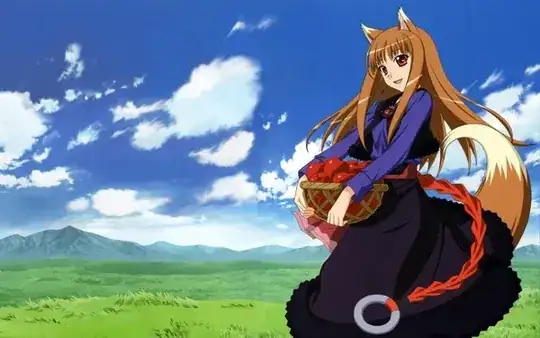According to The Joy of Pickling (see page 75 "Pickled Apples"), there is a recipe for Pickled Apples, which originates from the area around Russia; this recipe involves the whole apple, unlike most recipes that require the apples to be sliced.
Pickled Apples
"Another Russian specialty, brined apples retain their
crispness but acquire a flavor like that of sparkling
wine."
Ingredients:
- 3 quarts water
- 1/4 honey
- 8 teaspoons pickling salt
- 2 or 3 handfulls of sour cherry leaves
- 4 to 6 sprigs of tarragon
- 3 pounds of small tart apples, such as Graventeins
In a non reactive pot, bring to a boil water, honey,
and salt, stirring to dissolve the salt. Let the brine
cool.
Spread some cherry leaves and 1 or 2 tarragon sprigs on the bottom of a 1-gallon jar, Add a layer of apples on their sides.
3 should just fit. Layer more leaves, tarragon, and apples, and then repeat for a
third layer. Top with the rest of the leaves and tarragon.
Pour enough brine over the apples to cover them well. Push a freezerbag into the mouth of the jar and pour the remaining brine in to the bag.
Seal the bag. Let stand at room temperature for 5 or 6 days, until fermentation slows.
Remove the brine bag, cap the lid tightly and set in a dark place where the tempreature dosent rise above 50 degrees (use a fridge produces good results)
Let the jar stand for 30 to 40 days befre eating the apples.
After you open the jar, the apples will keep for at least a week in the fridge.
This Ukranian recipe details fermented apples to be a regional specialty of central Ukraine and are typically used as a relish or an accompaniment to roasts, poultry, and game.
They are somewhat similar to apples cured in sauerkraut but of a more delicate flavor although they are considered a delicacy by the old country gourmets, one has to be accustomed to them to enjoy their piquant taste. Ukrainian Canadian homemakers seldom, if ever, make the, but the recipe is worth preserving. When trying this recipe, select undamaged apples of a good quality and tart in flavor.
Ingredients:
- 5 lb apples (select ripe, undamaged apples with a tart flavor.)
- 5 qts water
- 2 cups rye flour
- 4 tbsp sugar or honey
- 2 tsp salt
Wash the apples thoroughly and remove the blossom ends.
Place the apples in a crock. If cherry or currant leaves are available, arrange the apples and leaves in alternate layers.
Bring the water to a boil. Pour half of the water over the flour and stir briskly until smooth. Add the remaining water and strain the mixture.
Stir in the salt and sugar. Cool to lukewarm. Pour over the apples, allowing enough liquid to rise several inches above the apples.
Cover with a plate and weight down with a suitable weight to keep the apples completely submerged. Keep at room temperature for 1 week and then store them.
It will take 5 to 8 weeks for the apples to ferment, depending on the variety used. During the process of fermentation, a scum will form on the surface.
It should be removed and the plate washed as often as necessary. Store in a cold place.
